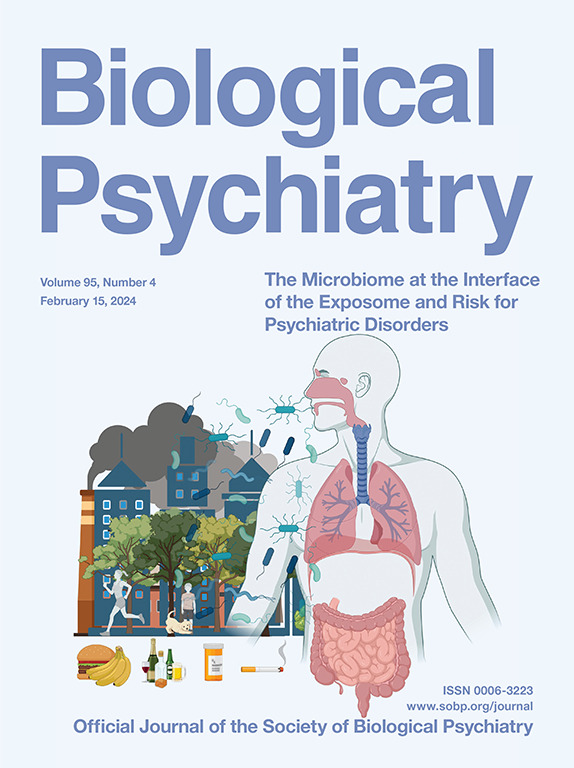摘要
背景:妄想症严重损害精神分裂症(SCZ)患者的社会功能,迫切需要创新的治疗方法。妄想症的病理生理学与杏仁核-前额叶(PFC)回路有关;因此,本研究系统地探讨了经颅直流电刺激(tDCS)腹外侧PFC是否能减轻妄想症并改善SCZ患者的社会功能:方法: 采用双盲、受试者内交叉设计,在 50 名 SCZ 患者中比较主动与假性 tDCS 的效果(ClinicalTrials.gov Identifier:NCT05746494)。参与者完成了两次刺激访问,每次包括两次 tDCS 会话,每次相隔一周左右,在两次访问中对主动(2 毫安,20 分钟)和假条件进行平衡。除了在实验室测量妄想状态及其相关的社会认知偏差外,还使用了生态瞬间评估(EMA)。这包括对妄想症和社会功能的日常评估,在每个 EMA 阶段(EMA-基线、EMA-活动、EMA-骗局)的七天内每天进行三次:在基于实验室的评估中,与假性刺激相比,主动刺激后参与者的妄想症状态有了更大的缓解,与妄想症相关的社会认知偏差也有了改善,包括主动刺激后与假性刺激后相比,参与者在模棱两可的情况下自我报告的敌意和敌意归因更低。同样,与EMA-sham期间相比,在EMA-active期间,参与者的日常妄想症较低,与基线和EMA-sham期间相比,参与者的社会交往动机较高,态度较好:目前的研究结果进一步证实了 tDCS 对 SCZ 患者减轻妄想症和提高社会功能的疗效。这项研究揭示了妄想症的神经病理学,并为未来的大规模干预提供了一条前景广阔的途径。Background: Innovative treatments for paranoia, which significantly impairs social functioning in schizophrenia (SCZ), are urgently needed. The pathophysiology of paranoia implicates the amygdala-prefrontal (PFC) circuits; thus, this study systematically investigated whether transcranial direct current stimulation (tDCS) to the ventrolateral PFC can attenuate paranoia and improve social functioning in SCZ.
Methods: A double-blind, within-subjects, crossover design was used to compare active vs. sham tDCS effects in 50 participants with SCZ (ClinicalTrials.gov Identifier: NCT05746494). Participants completed two stimulation visits, each including two tDCS sessions about a week apart, with active (2mA for 20mins) and sham conditions counterbalanced across the two visits. Alongside lab-based measurements of state paranoia and its associated social cognitive biases, Ecological Momentary Assessment (EMA) was used. This involved daily evaluations of paranoia and social functioning, administered three times per day for seven days in each EMA period (EMA-baseline, EMA-active, EMA-sham).
Results: For lab-based assessments, participants showed greater reductions in state paranoia and improvements in paranoia-related social cognitive biases after active stimulation compared to sham, including lower self-reported hostility and hostile attributions in ambiguous situations post-active versus post-sham. Similarly, in the EMA-active period, participants had lower daily paranoia compared to the EMA-sham period and higher social interaction motivation with better attitudes compared to baseline and the EMA-sham period.
Conclusions: Extending our pilot study, the current findings further supported the efficacy of tDCS in SCZ patients in mitigating paranoia and enhancing social functioning. This work sheds light on the neuropathology of paranoia and identifies a promising avenue for future large-scale interventions.

 求助内容:
求助内容: 应助结果提醒方式:
应助结果提醒方式:


